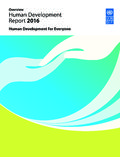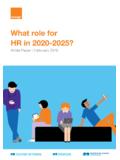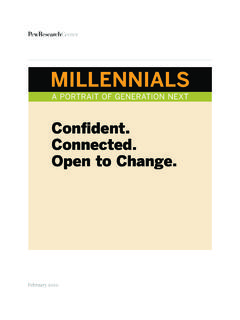Transcription of A Scoping Study End-of-Life Printed Circuit Boards
1 A Scoping StudyEnd-of- life Printed Circuit BoardsbyDr Martin Goosey and Dr Rod KellnerSupported byDepartment of Trade and IndustryIntellectShipley Europe LimitedAugust 2002A Scoping StudyEnd-of- life Printed Circuit BoardsContentsExecutive Summary31. Introduction42. Review of Current Situation73. Emerging Technologies and Developments134. Emerging Technologies165. Hydrometallurgical Approachesv196. Summary and Conclusions227. hamos ERP Electronic Scrap Recycling System268. Visit Reports28 References41 Bibliography43 Executive SummaryIn recent years there has been increasing concern about the growing volume of end-of-lifeelectronics and the fact that much of it is consigned to landfill without any attempt beingmade to recycle the materials it contains. The limited availability of landfill and the need forsociety as whole and industry in particular to adopt a more sustainable approach to materialsconsumption has led to greater attention being given to the problems associated with End-of-Life electronics.
2 Additionally, implementation of emerging legislation such as the draftWaste from Electrical and Electronic Equipment (WEEE) directive will necessitate theincreasing recovery and recycling of materials found in scrap a recent Printed Circuit board (PCB) Industry Sustainable Technology Scoping Study , a keyissue highlighted was the disposal of End-of-Life PCBs and the lack of establishedmethodologies and infrastructure capable of handling the increasing volumes of scrapboards that would need to be recovered following implementation of the WEEE is estimated that as much as 50,000 tonnes of PCB scrap is produced each year in the UKand of this only around 15% is currently subjected to any form of recycling. The remaining85% is consigned to landfill. Currently, the only board waste being recycled is the proportionhaving an inherent value because of its precious metal content and this is limited to recoveryof the metal content via smelting.
3 With growing pressure to recycle more End-of-Life circuitboards there is a clear need to develop and implement recycling methodologies that enablemore of the materials and the components to be Study has identified and assessed the existing and potential technologies that may beused for the recycling of End-of-Life Circuit Boards and their components. It is clear that thereis, as yet, no single solution capable of viably handling all types of PCB scrap. However, thetechnologies are being developed and solutions do exist. There is a clear window ofopportunity for the UK to establish and implement a PCB recycling capability using thistechnology before the WEEE directive has a major impact in key finding from this work is that there is an increasing and controversial export ofscrap PCBs from Europe to China for recycling. There has recently been much adversepublicity regarding the fate of this electronic waste, largely because of the use of unskilled,low cost labour and the dangerous and hazardous conditions to which workers are the shipping of End-of-Life electronics to China is undesirable and that Boards containinglow levels of precious metals are uneconomic to recycle via smelting, it is clear thatalternative recycling strategies will need to be implemented before new legislation will forcemore recycling of electronics GooseyChairman of PCIF Environmental Working Group31.
4 Background and Strategic ImportanceIn 1996 the Printed Circuit Industry Federation (PCIF), now a division of Intellect, formed anEnvironmental Working Group, which set itself the objectives of assisting the UK PCBindustry to adopt environmental and waste minimisation best practices and to understandthe implications of increasingly stringent legislation. The group has been very active over thepast six years and has undertaken numerous projects with support from governmentorganisations including the Department of Trade and Industry, Envirowise, the EnvironmentAgency and Waste and Resources Action Programme (WRAP), as well as from individualcompanies such as Shipley Europe its formation, the PCIF's Environmental Working Group's key activities and mainemphasis have been in addressing the environmental issues impacting the PCB industryand in helping with its environmental concerns.
5 More recently, it has also sought to addressthese issues via sustainable approaches and through the definition and implementation ofbest practices. Projects undertaken by the Working Group have resulted in such deliverablesas: An Environmental Legislation Database New tin-lead recovery equipment incorporating a novel and patented technology The PCB industry Environmental Best Practice Guide The PCB industry Sustainable Technology Scoping Study Several good practice guides covering specific topics important to the PCB industry, such as water use optimisation, copper waste and lead-free assembly An ISO 14001 Environmental Management System 'fast track' accreditation programmeWork is also currently drawing to a close on an investigation into the technical and economicviability of recycling the 25 litre plastic drums used to supply process chemistry to the PCBand related industries and a full report will be issued in the near future.
6 Members of theWorking Group have also recently expanded their activities through involvement in two pan-European projects that are being supported with funding from the European Union. Theresults and reports from many of the above projects, and other related relevant information,have been widely disseminated within the UK. Additionally, the dissemination activities havebeen augmented (and publicised) via conferences, joint programmes with Envirowise,working group meetings and the publication of environmental information via the PCIF'swebsite ( ).*There has also been much consolidation and contraction of PCB manufacturing capacity inthe UK, especially in the last two years, and the remaining manufacturers are facingincreasing pressure on margins, especially from producers in countries in the Far East suchas China. With environmental compliance and associated costs often being of the order of7% to 8% of overall manufacturing costs, any reductions that can be made in this figure willenhance the ability of the remaining industry to compete with overseas , it has become clear that a more co-ordinated and strategic approach toenvironmental issues is required if the UK PCB industry is to be able to implement bestpractices effectively whilst simultaneously enhancing its is through the adoption of such a co-ordinated approach that the UK PCB industry will beable to make significant cost savings via increased efficiency.
7 Not only in its use of rawmaterials and by embracing waste minimisation techniques but also through its ability tocomply in a proactive manner with the plethora of new and emerging legislation that isincreasingly impacting the whole electronics supply chain. Additionally, reductions in the useof raw materials and the generation of waste and the ability, wherever possible, to recycle4and reuse valuable resources will help both to sustain finite resources for future generationsand to reduce the ultimate impact on the environment. The PCB industry Sustainable Technology Scoping Study completed in 2001 identified andprioritized several key environmental issues that need to be addressed if the UK PCBmanufacturing industry is to operate effectively within a climate of increasingly stringentenvironmental regulation and to do so in a sustainable manner, minimising its impact on theenvironment and conserving raw materials for future use.
8 For example, a programme todevelop UV-ozone-based oxidative destruction techniques for the removal of organiccontamination in effluent streams may offer considerable benefits to both the environmentand the PCB industry, as well as to other industry sectors such as general metal Environmental Working Group has also identified the need to establish a UK packagingrecycling scheme to enable used chemical containers, especially 25 litre plastic drums, to berecycled. Following the identification of these two projects in the Sustainable TechnologyScoping Study both are now underway following the successful submission of proposals toappropriate funding bodies. New UV-ozone-based oxidative destruction techniques for theremoval of organic contamination in effluent streams are now being developed incollaboration with Shipley Europe Limited and C-Tech, in the UK, as part of a EuropeanCommission funded CRAFT project that includes UK PCB manufactures as well ascompanies in Germany and Sweden.
9 The 25 litre plastic drum recycling evaluation projecthas also been funded and, at the time of writing (August 2002), it is nearing completion, withthe final report issue and dissemination programme scheduled for the early third key project identified in the Sustainable Technology Scoping Study was related tothe issue of End-of-Life and scrap PCBs and the need to implement new recyclingtechnologies in order to enable industry to meet its obligations under forthcoming fact, the need to address this issue was identified as the top priority in the Scoping Study (along with the plastic drum recycling project). * (It is important to note that the PCIF has recently become part of a larger trade organisationknown as Intellect, which represents a much broader cross section of the UK ElectronicsIndustry, but which nevertheless includes the PCB Industry as a very important sector. InSeptember 2002, it is anticipated that the PCIF's website will be incorporated into, andbecome part of, Intellect's website which is ).
10 Programme and Project ContentThe work programme undertaken in this project has been directed towards an overallassessment of the current magnitude of the problem relating to the issue of End-of-Life andscrap PCBs within the UK. It has also sought to identify and define the suitability of availableand emerging technologies that may be applicable either in isolation, or in combination, forrecycling materials from both populated and unpopulated Circuit Boards . The project hasbeen pursued under the auspices of the PCIF for the benefit of the UK PCB input has been utilised wherever possible and this has included representationfrom board manufacturers, recyclers and academia. Visits to individual companies,universities and other organisations were also undertaken, within both the UK and the restof Europe, and these were augmented with information gained from telephone interviewsand literature searches etc as appropriate.





